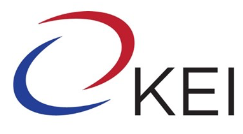Korea's Economy
From the Issue
Korea's Economy Volume 23About Korea's Economy
Korea’s Economy is KEI’s annual journal publication dedicated to the key issues of the day for the Korean economy. Articles in Korea’s Economy are designed to give the casual, but informed reader insight into issues related to Korea’s markets and financial institutions, economic reform, economic relations with the wider world, and North Korea. It is published jointly each year with the Korea Institute for International Economic Policy.
Rapid economic development lifted Korea’s per capita income from 15 percent of the U.S. level in 1970 to approximately half by 2005. Growth has been based primarily on inputs of capital and labor, driven by the highest rate of business investment in the Organization for Economic Cooperation and Development (OECD) area, a growing working-age population, long working hours, and rising participation in the labor force. In addition, investment in education and research and development (R&D) has facilitated a catch-up model of innovation. However, the growth of the working-age population is decelerating and is projected to begin falling beginning in 2016, while fixed investment has dropped from an average of 37 percent of gross domestic product (GDP) during the 1990s prior to the Asian crisis to less than 30 percent during the past few years.
